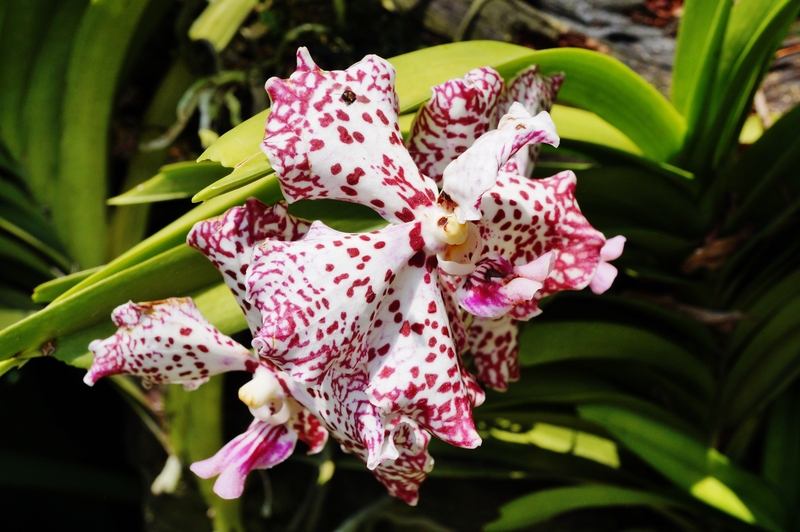Layered Planting Techniques to Shield Your Garden from View
Privacy in outdoor spaces is no longer a luxury--it's a necessity for many homeowners yearning for tranquility and seclusion. Layered planting techniques provide an effective, attractive, and eco-friendly solution to create natural barriers and shield your garden from prying eyes. Whether you have a cozy urban patio or a sprawling suburban backyard, understanding how to harness the power of multi-tiered greenery can transform your open space into a verdant sanctuary.

What is Layered Planting?
Layered planting is a landscaping approach that mimics nature's tendency to foster plant growth at different heights and depths. By arranging plants in multiple vertical and horizontal levels--such as trees, shrubs, perennials, and groundcovers--you achieve a rich, bold structure that offers both visual interest and practical privacy.
- Upper layer: Tall trees or large shrubs act as the first shield against external views.
- Mid layer: Medium-sized shrubs and ornamental grasses provide density and beauty.
- Lower layer: Low-growing plants, groundcovers, and flowers fill gaps and soften the edges.
The strategic use of layered garden screening techniques ensures year-round protection and a dynamic, wildlife-friendly ecosystem.
Why Use Layered Planting for Privacy?
Layered garden privacy planting offers several advantages over traditional fencing or single-species hedging:
- Visual interest: Diverse textures, colors, and heights create a living tapestry, breaking monotony.
- Biodiversity: Multiple plant types attract pollinators, birds, and beneficial insects.
- 4-season privacy: Well-chosen layers ensure coverage throughout the year, with evergreens for winter and deciduous plants adding lushness in spring and summer.
- Improved microclimate: Dense plantings buffer wind, reduce noise, and help manage temperature extremes.
- Eco-friendly barrier: Unlike solid fences, green screening absorbs carbon dioxide and supports natural ecosystems.
Principles of Effective Layered Planting for Garden Screening
To get the most out of your privacy planting techniques, it's important to plan carefully and choose the right plants for your site and climate. Here are the essential principles to keep in mind:
1. Assess Your Garden's Needs
- Identify problem areas: Where do you most need privacy--along boundaries, near seating areas, or beside patios?
- Light conditions: Observe sun and shade patterns, as these influence plant selection.
- Soil quality: Amend your soil if needed to support a thriving, multi-species border.
2. Combine Plant Heights for Effective Screening
Height variation is key for effective visual screening. A single row of tall trees or plants may look imposing and uninviting, while a gradual progression from tall to short creates depth and beauty.
3. Choose Deciduous and Evergreen Mixes
Evergreens provide year-round privacy, while deciduous trees and shrubs contribute texture, color, and seasonal interest. Mixing both strengthens your garden's screening ability throughout the year.
4. Plant Densely, but Allow Maturity Spacing
Close planting provides instant cover, but don't overcrowd. Consider the mature size of each species and leave room for them to grow naturally.
Best Plants for Layered Privacy Planting
Your choice of species makes a dramatic difference in the effectiveness and beauty of your privacy planting. Here are standout options for each layer:
Upper Layer: Trees and Large Shrubs
- Thuja (Arborvitae): Popular for evergreen privacy, fast-growing with dense, green foliage.
- Holly (Ilex): Prickly leaves deter intruders and provide four-season screening.
- Hornbeam (Carpinus betulus): Attractive, close-knit Pyramidal shapes that hold leaves into winter.
- Laurel (Prunus laurocerasus): Broadleaf evergreen ideal for city gardens and noise reduction.
- Ornamental Pear (Pyrus calleryana): Fast-growing, disease-resistant, and covered in spring blossoms.
Mid Layer: Medium Shrubs and Tall Grasses
- Boxwood (Buxus): Classic, easily shaped perennial that adds formality or whimsy.
- Hydrangea: Large blooms, seasonal color, and dense foliage for summer and fall screening.
- Dogwood (Cornus): Striking branch color in winter, with lush green summer foliage.
- Bamboo: Clumping varieties offer rapid, lush screening (avoid invasive running varieties).
- Muhly Grass (Muhlenbergia): Airy plumes provide movement and soft opacity.
Lower Layer: Groundcovers and Perennials
- Hosta: Broad, shade-tolerant foliage perfect for filling gaps under trees.
- Heuchera (Coral Bells): Colorful leaves for all-season interest and dense groundcover.
- Ferns: Texture and thick coverage in moist, shaded borders.
- Geranium (Cranesbill): Low mounded growth, neat edging, and bloom interest.
- Pachysandra: Evergreen groundcover for year-round green carpets.
How to Design a Layered Garden Privacy Border
Careful planning helps ensure long-lasting results when applying layered screening planting techniques:
Step 1: Map Out Screening Zones
- Walk your property and note areas needing privacy: roadways, neighboring windows, patios, or pools.
- Sketch a simple plan showing sun exposure and utilities to avoid planting over pipes or lines.
Step 2: Plan Your Layers
- Place the tallest trees/shrubs at the back (or center if you have an island bed), then graduate down in height.
- Stagger species to break up rigid rows, allowing irregular, naturalized drifts.
Step 3: Select and Arrange Your Plants
- Opt for a mix of evergreen and deciduous species for all-season privacy.
- Pair flowering varieties with foliage plants to blend privacy with color and interest.
- Incorporate native plants for better resilience and wildlife support.
Step 4: Prepare the Soil and Plant
- Amend soil as necessary with compost, manure, or peat to create fertile conditions.
- Dig holes two times the width of root balls and at matching depth for good root growth.
- Water well at planting and mulch to conserve moisture and suppress weeds.
Maintenance Tips to Sustain Layered Privacy
- Water deeply: Especially during the first two seasons while roots establish.
- Prune smartly: Shape shrubs and trees without removing lower growth--this retains near-ground privacy.
- Mulch and feed: Refresh mulch annually and feed with slow-release fertilizer as plants mature.
- Monitor for pests: Diverse plantings deter most issues, but check regularly for any problems.
Creative Approaches to Layering for Privacy
Mixing Hardscaping and Softscaping
Combine living layers with fencing, latticework, or stone walls to increase privacy and aesthetics. For example, a lattice panel with climbing roses or jasmine layered in front of a hedge gives fragrance, beauty, and dense screening. Stagger plants in groups instead of straight lines, using curves to add depth and visual intrigue.
Adding Vertical Elements
- Train climbing plants such as clematis, honeysuckle, or flowering vines on supports for a quick green screen effect.
- Install trellises or pergolas in strategic spots to support climbers and raise the height of lower planting beds.
Wildlife-Friendly Privacy Layers
- Include berrying shrubs and fruit trees to encourage birds and wildlife, enhancing the natural feel of your garden.
- Allow leaf litter and brush piles at the base of your plantings for bugs, hedgehogs, or beneficial creatures that aid pollination and pest control.

Frequently Asked Questions About Layered Planting for Privacy
- How quickly will I see results from layered privacy planting?
While some evergreens and fast-growing shrubs establish quickly, true density and beauty develop within 2-5 years as layers fill in and mature. For instant coverage, combine newly planted layers with existing hedges or fences. - What if I have a very small urban garden?
Use slim columnar trees (like Italian cypress or dwarf conifers) and vertical trellises with climbing plants to maximize upward screening without losing valuable floor space. Densely plant shade-tolerant perennials for lush lower coverage. - Are there any low-maintenance privacy plants?
Boxwood, yew, holly, laurels, and clumping bamboo are generally low maintenance and excellent for layered privacy screening. Native plant choices often prove even less demanding over time. - Can I use edible plants in my privacy layers?
Absolutely! Fruiting trees, raspberry and currant bushes, or grapevines offer yield and natural screening. Pair with herbs and perennial vegetables for a practical and beautiful edible border.
Conclusion: Transform Your Garden Into a Private, Lush Haven
By integrating layered planting techniques to shield your garden from view, you not only protect your personal space but also enrich the biodiversity and beauty of your landscape. Start by understanding your site's needs, choose plant layers suited to your climate, and blend textures, heights, and colors for a lush, inviting retreat. With creative layering, every garden--large or small--can enjoy lasting, green privacy with year-round appeal. Embrace these privacy planting strategies and watch as your outdoor oasis flourishes into a secluded paradise.